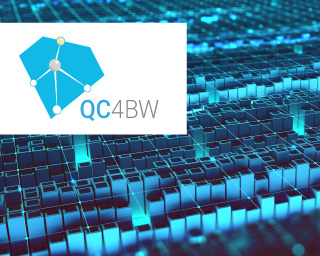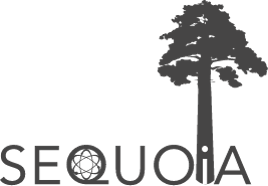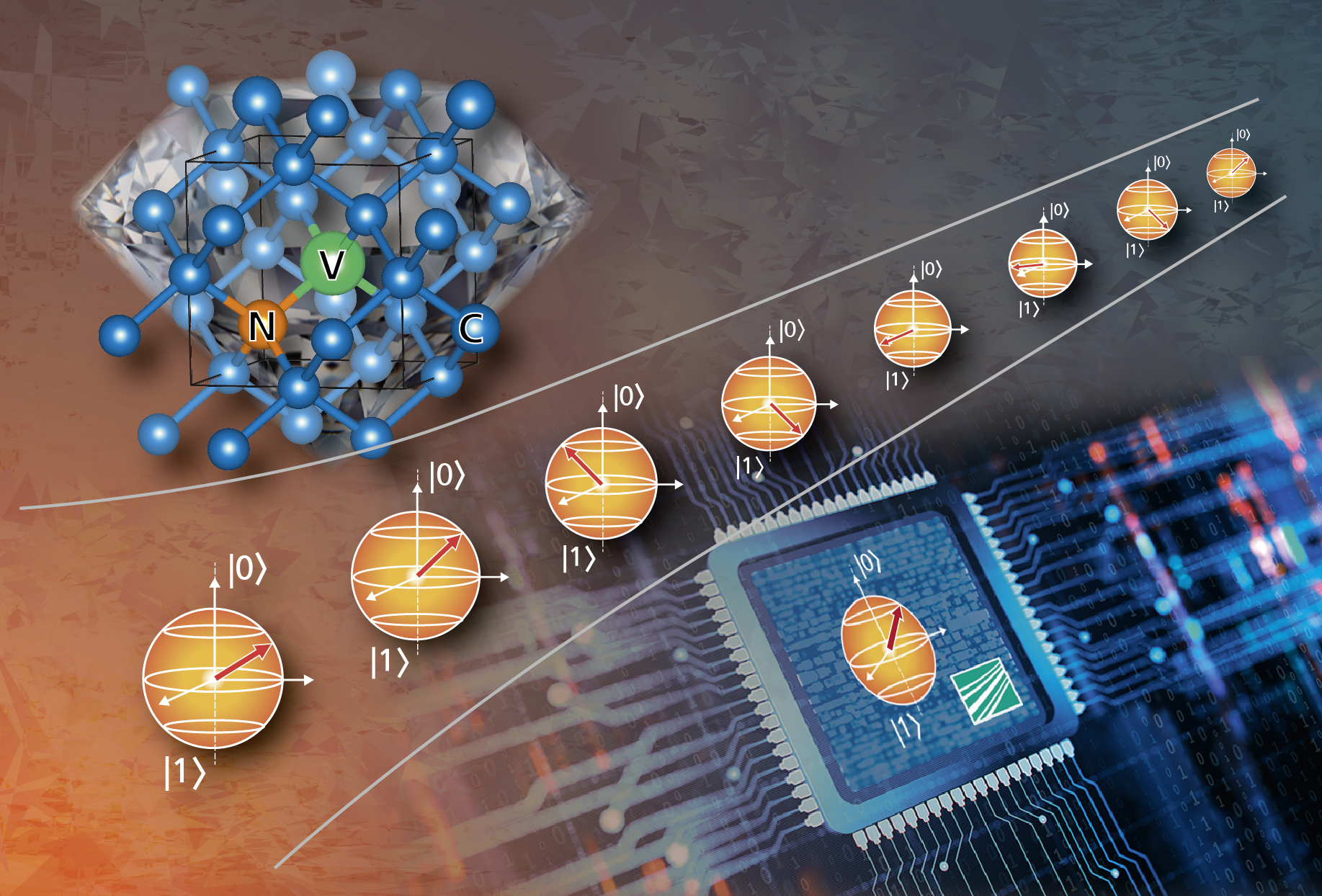Further networking for applied quantum computing
02/09/2022 – Status meeting on the projects of the Competence Center “Quantum Computing Baden-Württemberg”

For the project “QC-4-BW – Diamond-based spintronic quantum register for a scalable quantum processor”, Dr. Daniel Hähnel from the Fraunhofer Institute for Applied Solid State Physics IAF presented the latest work results. On the way to the goal of developing a 10-qubit quantum register with integrated quantum memory for the evaluation of quantum chemical processes, all milestones have been successfully taken so far. Next step is the construction of a demonstrator and its successful running; in perspective, the development of a scalable architecture, the control of error rates, and the improvement of qubit fidelity are on the agenda.
PD Dr. Thomas Wellens from Fraunhofer IAF presented the interim status of the project “QORA – Quantum optimization using resilient algorithms”, which aims to achieve quantum advantages in portfolio management. To this end, optimization algorithms have been successfully developed and tested in initial application scenarios. Next, in collaboration with the “SEQUOIA” project, further use cases are to be run through in order to integrate the error mitigation strategies developed theoretically in the “QORA” project even more broadly into today’s industrial applications.


Representing the project “SEQUIOA – Software engineering of industrial hybrid quantum applications and algorithms”, Dr. Christian Tutschku from the Fraunhofer Institute for Industrial Engineering IAO provided insight into current results: The project team succeeded in evaluating several use cases from the production, logistics, and engineering sectors, and in practically testing developed software components. Error minimization and mitigation were also key challenges in applied quantum software and algorithm design, which is the basis for the aforementioned project cooperation with “QORA”. As a next step, the researchers will initiate benchmarking processes to test which applied algorithms harmonize best with which hardware.
Dr. Daniel Urban from the Fraunhofer Institute for Mechanics of Materials IWM reported on the project “SiQuRe – Modeling and simulation of qubit registers from chains of NV centers on dislocations in diamond”, in which researchers are using models and simulations to develop concepts for diamond-based qubit registers. Great progress has been made so far especially in the area of error management, using VQE (Quantum Eigen Solver) and VQD (Variational Quantum Deflation) algorithms.

PD Dr. Birger Horstmann from the Institute of Technical Thermodynamics at the German Aerospace Center (DLR) explained the status of the project “QuESt – Material design for electrochemical energy storage and conversion devices using innovative simulation techniques”. In it, researchers simulate quantum chemical processes for energy materials using the IBM Quantum System One. Applying an innovative method for energy calculation, the so-called Virtual Quantum Subspace Expansion, DLR together with HQS Quantum Simulations succeeded in significantly reducing occurring errors.
An interim status on the project “EFFEKTIF – Improving the efficiency of stability analyses and error correction protocols for classical interconnected critical infrastructure networks” gave Dr. Corinna Köpke from the Fraunhofer Institute for High-Speed Dynamics (Ernst-Mach-Institut, EMI). The project aims to simulate critical infrastructure fault scenarios using quantum computing to improve system resilience. So far, The project team has successfully mastered the transfer of typical network structures to quantum networks; still pending is the analysis of the importance of quantum mechanical interference effects for increasing the efficiency of the simulations.
Cross-project networking for synergies and economic application
Following the project presentations, small groups discussed how they could together shape the further development of the projects. The desire for even stronger cross-project networking emerged, putting in prospect synergy effects to be achieved, for example in the areas of software engineering, error mitigation, or methodology, and benchmarking processes to be established. In addition, the project managers stated the goal of further intensifying cooperation with industrial partners in order to develop the projects even more specifically with regard to their economic valorization.
Various event formats were considered for this purpose, as were digital solutions for the targeted transfer of know-how within a future community for quantum computing algorithms. In this context, the project network can advance the hybrid training program on quantum computing for companies, researchers and project partners offered by the Fraunhofer Institutes IAF and IAO within the framework of the KQC BW.

The Competence Center “Quantum Computing Baden-Württemberg”
As the first of seven regional centers within the national quantum computing network of Fraunhofer Gesellschaft, the KQC BW began work in May 2020 under the coordination of the Fraunhofer Institutes IAF and IAO. For the goal of advancing applied research on quantum computing in Baden-Württemberg and developing economic valorization potential, the state is providing funding of up to 40 million euros until 2024. With the inauguration of the IBM Quantum System One in Ehningen, KQC BW reached an important milestone in the summer of 2021. Since then, Europe’s first quantum computer has been available to project partners and external interested parties from science and industry for research purposes.
Since 2021, the six projects “QC-4-BW”, “QORA”, “SEQUOIA”, “SiQuRe”, “QuESt”, and “EFFEKTIF” have been funded within the KQC BW. The projects include several university and non-university research institutions and associated industrial companies from various sectors. Prof. Dr. Rüdiger Quay and Dr. Martin Walther from Fraunhofer IAF as well as Prof. Dr. Anette Weisbecker and Thomas Renner from Fraunhofer IAO act as contact persons of the KQC BW.
 Fraunhofer Institute for Applied Solid State Physics IAF
Fraunhofer Institute for Applied Solid State Physics IAF